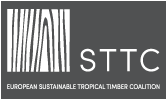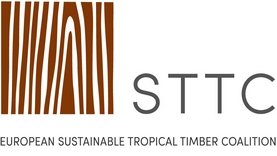Buying into forest biodiversity
 Photo: Ludovic Marin/AFP
Photo: Ludovic Marin/AFP
A focus at the One Forest Summit in Gabon was harnessing markets in support of forest maintenance, including via biodiversity certificates.
The Libreville event in March included a roundtable discussion hosted by the ATIBT looking at the relation between domestic timber markets in Central African countries and uptake of sustainable forest management. It was described as ‘an increasingly important topic in [the region’s] forest economy’.
The conclusion was that development of its domestic markets, as well as exports, are ‘essential for the future of the sustainable sector’. But, it was agreed it wouldn’t be easy. “We need a fiscal approach to facilitate access to sustainable wood by consumers in our countries,” reported ATIBT. One suggested way forward was a cut in VAT on this timber.
The summit also included discussions on ‘innovative finance’, looking at new instruments that could attract global investment in forest maintenance and wider conservation. These opened with a presentation on a Global Environment Facility report ‘Opportunities and Challenges for Biodiversity-Positive Carbon Credits and Nature Certificates’. This explores market-based solutions for biodiversity conservation.
ATIBT was also involved in developing this theme for the Summit. It maintains that sustainability certification of forests, as ‘both economically profitable and environmentally beneficial,’ is part of the solution, alongside ‘classic conservation’ measures, for combating deforestation and degradation. At the same time, it acknowledges, that such approaches are not ‘valued to their full extent’. It notes in particular that the access of certified sustainable forestry and timber production to carbon finance is restricted as they cannot demonstrate the same ‘additionality’ of benefits as their non-certified counterparts. Moreover, the carbon market mechanism of ‘offsetting’ is itself also increasingly being questioned. Instead schemes involving business making ‘contributions’ to combating climate change are increasingly being put forward, including at COP27.
“We would then speak of a ‘carbon contribution’ or ‘biodiversity contribution’, without the right to offset,” states ATIBT. It goes on to support the view of CIRAD researcher Alain Karsenty that ‘we abandon the term carbon credits in favour of what could be “positive impact certificates” covering carbon, biodiversity and social issues’.
ATIBT is itself involved in the Organisation for Biodiversity Certification (OBC) initiative. This ‘aims to create an operational tool for assessing local positive impacts on biodiversity or on the carrying capacity of biodiversity, based on technical and scientific consensus’.
ATIBT, through its ‘Carbon and Diversity Commission’ (CBC) is also addressing other opportunities for forest concessionaires to tap into carbon finance via ‘Improved Forest Management’ (IFM) projects, such as those adopting ‘reduced impact logging for climate change mitigation’ strategies. “Too few IFM projects exist, methodologies are complex and technical barriers are holding back forest concessionaires,” said ATIBT. “The CBC is studying how to remove obstacles and connect investors with project leaders on the ground.”
One Forest Summit attendees also issued the Libreville Plan, with its pledges including a political commitment to reverse deforestation by 2030 and securing remuneration for services provided to the rest of the world by forest countries.
It was also announced that €100 million had been committed by France, the Walton Foundation and Conservation International for Positive Conservation Partnership initiatives, with volunteer countries focused on carbon stock and biodiversity protection.





